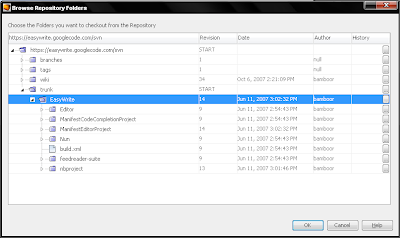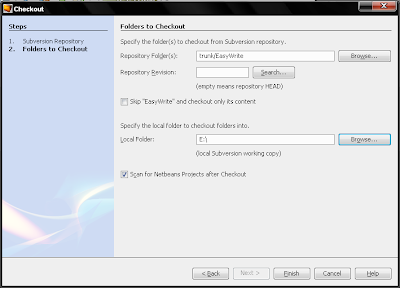Are you not satisfied with the zip bundle thats generated out of your module suite from Netbeans? Are you looking for an easy way of generating installers for suite projects right inside the Netbeans IDE?
Well, here it is..a plugin based on openInstaller installer framework that does just this. openInstaller is an extendable, cross-platform, multi-home install and customizable installer framework. All you have to do after installing the plugin is :
- Configure your module suite to be 'standalone'. This is required to generate an installer. The plugin will assist you in this if you have not configured your module suite project yet.
- Choose the Generate suite installer button on the toolbar (with CD icon
). This will bring up the wizard.
- Enter the basic details about your application (like, name, version, system requirements and license).
- When you click Finish on the wizard, the plug-in will generate an installer and keeps it under 'dist' folder. There are three zip files in that folder : one module suite zip (generated by Netbeans, as before),
-binary.zip is the generated installer (you can rename this to any name you want and -source.zip which contains the source files for the installer. The latter can be used in upcoming openInstaller IDE to customize the generated installer. - Distribute
-binary.zip bundle and unzip on the target machine and execute the launcher script specific to your platform (There's one for all *NIX and one for windows).
Download the plugin from this update center. (you need to manually configure this update center in your Netbeans IDE. If you do not know how to do this, go here. Look into the first part and use this update center link.
More information (in the form of FAQ) about the plugin is here.
You really have to see this flash demo which shows how easy is to generate an installer for your module suite application.
Disclaimer: The module described here are purely experimental (alpha version), so no guaranties. Use at your own risk.
Below are the screenshots of the plug-in actions..
The screenshots show the process of generating installers for the FeedReader suite sample that comes with Netbeans IDE
http://blogs.sun.com/vdblog/entry/netbeans_module_suite_installer_generator





